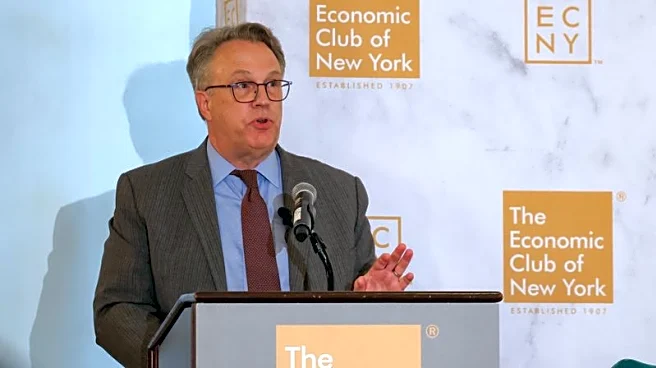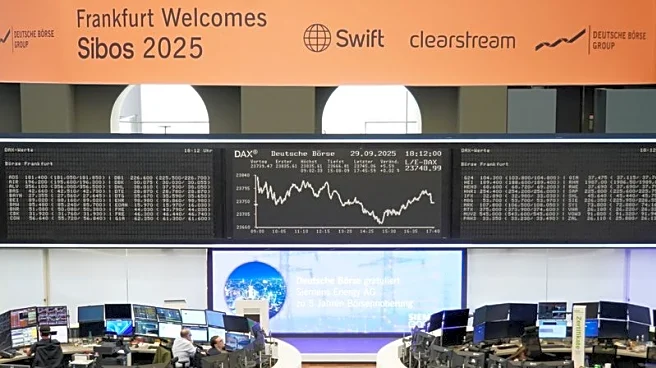What is the story about?
What's Happening?
Federal Reserve Bank of Boston President Susan Collins has indicated a willingness to consider additional interest rate cuts if economic data supports such a move. Speaking at the Council on Foreign Relations in New York, Collins noted that while she supported the recent quarter percentage point rate cut to a range of 4% to 4.25%, future cuts would depend on incoming data. The Federal Open Market Committee's recent decision aimed to balance risks to the labor market with persistent inflation pressures, partly attributed to President Trump's trade tariffs. Collins described the economic outlook as 'relatively benign' but acknowledged a 'highly uncertain environment' with potential for persistent inflation and adverse job market developments.
Why It's Important?
The potential for further interest rate cuts by the Federal Reserve could have significant implications for the U.S. economy. Lower rates typically encourage borrowing and investment, potentially stimulating economic growth. However, the decision to cut rates further will depend on the balance between inflation risks and labor market conditions. Businesses and consumers could benefit from lower borrowing costs, but persistent inflation could erode purchasing power. The Fed's cautious approach reflects the complexity of managing economic policy amid trade tensions and global economic uncertainties.
What's Next?
The Federal Reserve will continue to monitor economic indicators closely, with future rate decisions likely influenced by inflation trends and labor market data. Stakeholders, including businesses and investors, will be watching for signals from the Fed regarding its policy direction. The central bank's next meeting could provide further insights into its economic outlook and policy adjustments.
AI Generated Content
Do you find this article useful?















